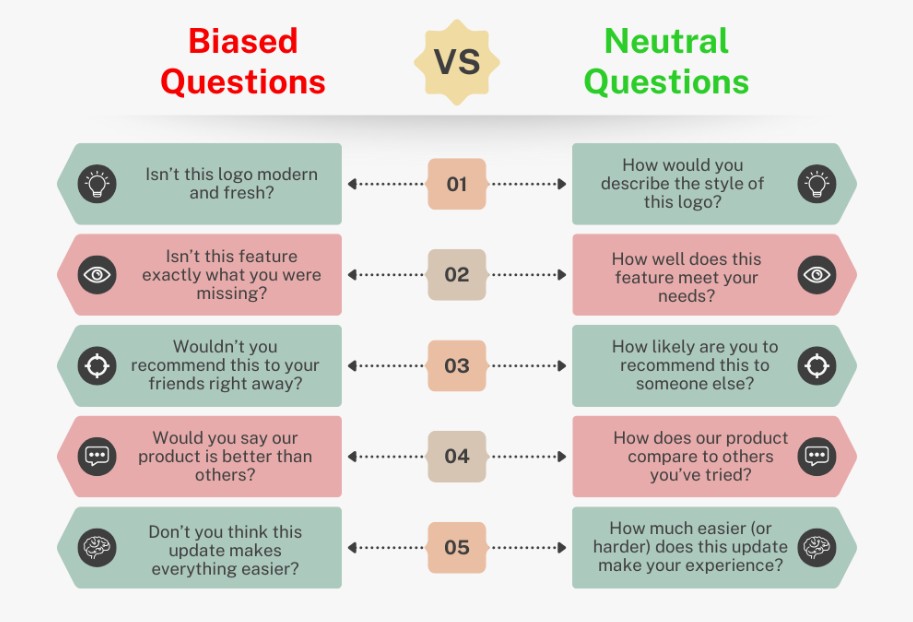This is the second part of a two-part article on Crowdsourced Market Research. Click for Part 1.
Crowdsourcing market research can feel like striking gold…or digging through a pile of junk. Without the right game plan, you will waste hours chasing insights that lead nowhere. But no worries. In this article, we explore 5 must-know market research best practices to crowd wisely, improve your market performance, take an innovative approach, and find solutions that drive results.
Once you are done reading, you will be ready to tap the crowd’s power and turn raw feedback into real outcomes.
Crowd Wisely: 5 Must-Know Practices For Smarter Research
Focus on these must-know market research best practices as you plan your next crowdsourced research. Use them to shape better questions, choose the right audience, and avoid wasting time on confusing feedback.
A. Mix Quantitative & Qualitative Questions
Combine data-driven questions (like ratings, multiple-choice, or rankings) with open-ended ones that let people explain why they think the way they do.
Why should you do this?
Numbers show what is popular, but written responses give you quality inference or the “why” behind the vote. Without it, you risk chasing the top-voted idea blindly. That is how you lose context or misread crowdsourced information and end up following trends that do not actually matter.
Here’s what you should do:
- Use a ranking question and then ask what made their #1 stand out.
- Pair multiple choice with a follow-up like “Why did you choose that?”
- Ask for one-word reactions, then follow with “What makes you feel that way?”
- Let people vote in idea competitions, then comment on how to improve each entry.
- Use polls for initial impressions, then ask what would make them change their mind.
B. Write Down Exactly What You Want To Learn
Without that clarity, you risk collecting random opinions that do not help make useful decisions. Then, when you do not know what you are trying to learn, your questions wander, your results get muddy, and your team ends up debating what the data really means.
What does this mean for you? A fast track to wasted time and missed opportunities. You risk missing real consumer needs and chasing emerging trends that do not truly serve your goals.
Here’s what you should do:
Then, do these as well:
- Ask yourself, “What decision will this feedback help me make?”
- Create a checklist of yes/no questions you want the answers to clarify.
- Avoid “just curious” questions unless they support a specific outcome.
- Set a priority, like improving brand loyalty, pricing, or product features, and stick to it.
- During innovation contests, give participants a clear challenge tied to your learning goal.
C. Reword Any Question That Sounds Biased
Do not include questions that subtly push people toward a certain answer, even if you do not mean to. When your wording leads the crowd, your feedback gets skewed and the crowdsourced market research you run stops serving its real purpose.
The result? You end up validating your assumptions instead of learning something new.
This can make you feel confident about the wrong thing and push your project in a direction that does not reflect real customer needs.
Here’s what you should do:
- Remove emotionally loaded words like “amazing” or “best.”
- Keep questions neutral. No exclamation points or marketing phrases.
- Avoid starting questions with “Wouldn’t you say…” or “Don’t you think…”
- Do not assume intent. Use “Why did you choose this?” not “Why did you like this?”
- Ask someone outside your team to review the questions for bias before launching.
- Swap leading questions like “Do you agree this feature is useful?” with “How useful is this feature?”
D. Include Context Before Each Question
Without context, your crowd might guess what you mean, or worse, all guess differently. That gives you feedback that looks useful on the surface but actually points in five different directions, which hurts your data quality.
One simple sentence before a question helps everyone stay on the same page and react based on the same understanding, not their assumptions. This can help you shape products and services people actually want.
Here’s what you should do:
- Highlight anything new: “This logo version uses updated brand colors and font.”
- Set the mood if it matters: “This ad would run during a high-energy fitness video.”
- Add a one-line intro like, “Imagine you’re shopping for this online…” before asking about product appeal.
- Describe the use case briefly: “This feature is for small business owners managing payroll.”
- Use real-world comparisons: “Think of this like Uber, but for healthcare appointments.”
- Mention the goal behind the feature: “This update aims to simplify onboarding for new users.”
E. Collect Feedback On Your Questions As Well
Ask your participants if your questions made sense, felt clear, or were frustrating to answer.
Why should you do this?
Because it is easy to assume your survey works just fine, but if people misunderstand your questions, your data is useless.
Worse, you might build an entire product based on feedback that came from confusion or chase new ideas that do not solve problems. When you check how your questions land, you catch problems early and improve future research every time you run it.
Here’s what you should do:
- Ask, “Did you feel unsure about any of your answers?”
- Offer a “skip this question” option and track which ones get skipped most.
- Include a comment box labeled “Tell us if anything felt off or hard to answer.”
- Add a quick question at the end: “Were any questions unclear or confusing?”
- After the survey, follow up with a few participants to collect data on what they’d change.
Conclusion
Look at your next crowdsourced market research plan like a blueprint. Before you collect a single answer, double-check your questions, your goals, and your setup. Spot anything that can confuse, mislead, or waste your audience’s time.
Then, tighten one survey or one test run. Even small upgrades now prompt stronger insights later. Good crowdsourcing is not simply about getting more answers; it is about getting the right ones that actually move your business forward.








0 Comments